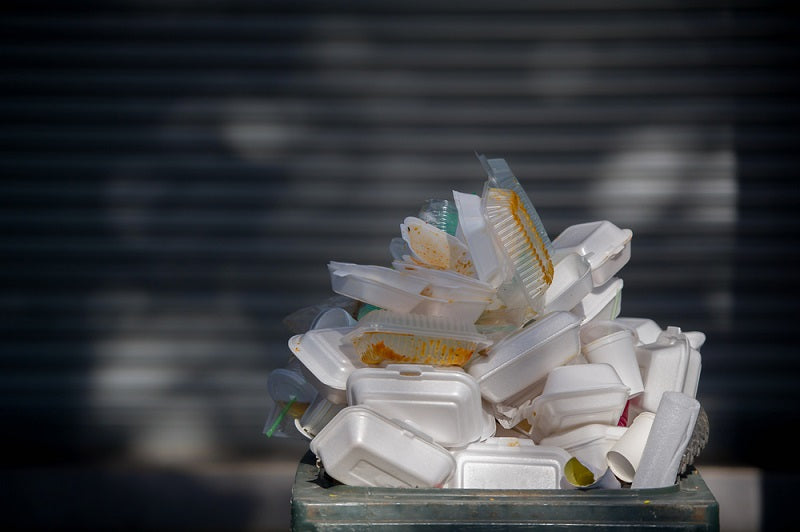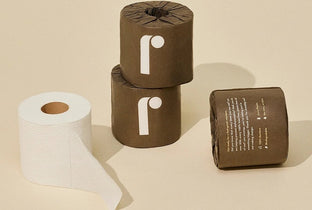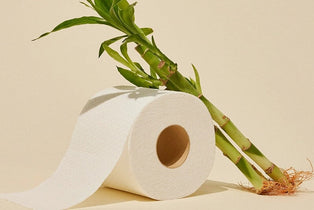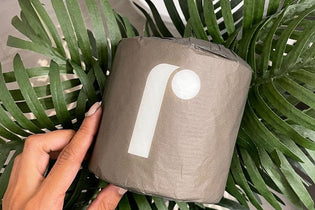
TLDR
You enter your local grocery store. Your favorite shopping tote adorns your shoulder. The cool air and crisp scent of dinner possibilities surround you. You grasp a shopping cart with optimistic purpose before setting out on your mission to find products with only sustainable packaging.
You turn the first aisle.
Plastic.
A rainbow of shiny plastic packaging in a myriad of shapes and unrecyclable sizes greet you with manufactured smiles. You scan the next few rows where seemingly endless walls of more unsustainable packaging meet your discouraged gaze.
This not-so-super-market scenario happens all too often.
But what if it didn’t have to? Hold on to that optimism, eco voyager. Reducing packaging waste is possible. To reduce packaging waste, the first step is to understand it: what it is, what causes it, and how it impacts the environment. Then, we can take brave, Sunday-shopping strides to reduce it.
What is Packaging Waste?
Packaging is any material used to protect, ship, or market a product on its journey from birth to buyer. Packaging waste, then, is any of that excess material that gets discarded, likely to end up in landfills to pollute our land, water, and air.
Plastic pollution is one of the biggest environmental issues we face today. Plastic containers, plastic bags, single-use plastic bottles, and plastic from electronic waste fill the world's landfills each day. According to the Environmental Protection Agency (EPA), the total generation of municipal solid waste (MSW) in 2018 alone was 292.4 million tons. That’s about 4.9 pounds of food waste, plastic containers, electronics, and product packaging per person per day.1
What is Packaging Waste Made Of?
Packaging can be made of a variety of materials. But amongst the most common you’ll likely find:
- Plastic
- Paper
- Glass
- Steel
- Aluminum
- Wood
While the recycling rate in the U.S. has increased from 7% in 1960 to 32% today,2 the problem is that so much packaging is not recyclable or reusable, and therefore, becomes waste.
Even when packaging waste is recyclable, the high cost of recycling often deters businesses and municipalities from doing so:3
- It costs about $147 to recycle one ton of garbage
- Alternatively, it only costs about $28 per ton to send trash to the landfill.
Not to mention, the additional labor and fine-tuned process required to properly recycle goods compounds even more cost.3
Examples of Packaging Waste
Look around your home, workplace, or local businesses and it won’t be hard to spot packaging waste. Despite our best efforts, packaging waste has become all too normal in our home and commercial lives as the economy relies on surplus materials to sustain commercial systems.
Some examples of packaging waste you might find in your everyday life include:
- Plastic food wrappers, like granola bar and candy bar wrappers
- Dry food packaging and containers, like cereal boxes and snack containers
- Takeout containers, like paper bags, food tins, and condiment cups
- Shipping materials, like styrofoam, plastic wrap, and bubble wrap
- Plastic waste from household product containers, like dish soap and laundry detergent bottles
And that’s just to name a few.
Food production makes up a massive amount of packaging waste due to the single-use plastic packaging usually required to maintain sanitation standards. Ecommerce—especially in recent pandemic years—generates boatloads of shipping material that often cannot be salvaged or recycled. Bubble wrap may seem fun, but the turtles would likely disagree.

What Causes Packaging Waste?
Packaging waste goes far beyond the final on-shelf product we see in our homes and grocery stores.
Let’s refer back to that granola bar example.
Its final wrapper is just the chocolate-coated tip of the iceberg. That one bar came from a branded box, which was delivered to the store in a bigger box, which was shipped from a factory in even more packaging materials.
To wrap our minds around the causes of packaging waste, then, we must consider the entire product life cycle.
Packaging Waste in the Product Life Cycle
There are many different paths products take to arrive in our hands. Here are some general examples of stages a product might undergo before consumption, and how it contributes to excessive packaging waste:
- Product development – When a product is created, it endures multiple stages of prototyping, packaging design, and material-sourcing logistics, often with multiple producers and manufacturers. Each time a prototype or its supporting materials are sent, shared, and shipped requires potentially wasteful packaging.
- Manufacturing – A single product will typically require more than one manufacturer to produce and ship necessary materials. Certain products may have special packaging and shipping requirements, like refrigerated food or overseas shipments, which can increase plastic waste generation from plastics and styrofoam packaging.
- Packaging – Like manufacturing, the nature of the product is carefully considered in this stage—and packaged accordingly. Food and beverage products must sustain a certain shelf life to be viable for grocery store inventory. Unfortunately, unsustainable materials like plastic are often used to extend shelf lives.
- Branding – Brands are forced to battle against one another on shelves, so their packaging becomes a key differentiation tool. This can lead to product over-packaging. If you’ve ever bought a tube of mascara, think about how much material was used to seal the tube, and how much more was used to market it.
- Shipping – Online shopping made up more than 14% of all U.S. sales in 2021.4 The pandemic normalized online shopping so much that most of us can name exactly what product arrived in our most recent Amazon delivery. Many companies are taking strides to use more sustainable packing materials, but there is more to do yet.
- Out-the-door transport – Let’s not forget about the packaging material required for walking out of the grocery store with your curated cart. Plastic grocery bags and produce bags are still widely used in America—100 billion per year, in fact. Plastic bags are difficult to recycle, so most of them end up in the landfill or ocean.
Cost as a Factor
At this point you may be asking yourself, why doesn’t everyone just switch to eco-friendly packaging materials?
In many cases, it boils down to the bottom line.
Biodegradable materials can cost anywhere from 2 to 10 times more than non-biodegradable alternatives.6 This includes materials like paper and other compostable and biodegradable packaging.
On the same coin, plastic is typically a cheaper packaging alternative compared to more sustainable options. Depending on the packaging type, plastic can be 3.8 times or less expensive than other materials.7 This, in turn, forces businesses to make the tough decision between sustaining the earth, or sustaining their business.
The Environmental Impact of Packaging Waste
So, where does all of this waste end up? Of the 82 million tons of packaging waste thrown away in 2018, 53.9% was recycled content. Another 9% was combusted, or burned to decrease waste volume, while the remaining 37%—over 30,000 tons—was sent to the landfill.8
There are 2,632 active landfills—landfills currently accepting waste—across the United States, plus thousands more inactive ones. While efforts are made to contain contaminants, these massive waste bodies can severely disrupt the land, water, air, and human populations around them.9
Here are just a few negative environmental impacts of landfill waste:10
- Waste that attempts to decompose in landfills emits harmful greenhouse gasses like methane, carbon dioxide, and nitrogen, which contribute to climate change.
- Leachate, a toxic liquid formed from landfill leakage, seeps into and contaminates nearby waterways.
- Landfills disrupt and contaminate the ecosystem that existed there before it, displacing thousands of living creatures and wildlife species.
- Studies have shown that humans living near landfills may be more likely to develop certain diseases and malformations at birth.
- Landfills often catalyze a process called eutrophication, when increased production of nitrate causes a decrease in water-based oxygen, which endangers aquatic life.

How to Reduce Packaging Waste
Packaging waste may feel like a landfill-sized issue to tackle, but there are plenty of steps we can take to reduce packaging waste together:
- Buy from zero-waste stores or a package-free shop. Zero-waste stores are popping up all around the country to sell products without any packaging. Just grab some totes and jars and shop away!
- Shop at farmers' markets. Not only will you find less post-consumer waste, you’ll also get higher-quality products sourced locally and more sustainably.
- Cut down on online shopping. Less online shopping means less packaging waste. Opt for in-store or second-hand shopping instead.
- Carry reusable bags with you everywhere. Throw some in your car, in your backpack, and over your shoulder, so that you never need to rely on plastic bags.
- Instead of ordering that Chinese food for delivery, pick it up instead. Bring a reusable food container and a reusable bag made of recycled plastic with you and ask the restaurant to pack your items in those instead. Restaurants will usually oblige, since they save a few bucks on packaging in the deal, too.
- Create a reusable toolkit and place it in your car or backpack. Include post-consumer recycled content like a reusable cup, bottle, utensils, straws, and food storage containers.
- Purchase products with sustainable packaging such as paper. Always check for the recyclable, compostable or biodegradable symbols.
Reel In Packaging Waste with Reel Paper
It might feel like a daunting task to eradicate packaging waste, but if you start with small steps, you’ll be delighted by how much of an impact you can make.
Here at Reel Paper, we envision a new, sustainable future for paper products—and it starts now. Our premium, tree-free toilet paper, recycled paper towels, and recycled facial tissues are made with sustainable bamboo and recycled paper. The best part? It’s plastic-free and 100% biodegradable from roll to wrap.
It’s our mission to give you paper products that you can finally feel good about buying, without sacrificing on quality. From bamboo toilet paper to recycled fiber products, shop our collection and get Reel Paper delivered right to your door.
Sources:
- EPA. National Overview: Facts and Figures on Materials, Wastes and Recycling. https://www.epa.gov/facts-and-figures-about-materials-waste-and-recycling/national-overview-facts-and-figures-materials
- EPA. America Recycles Day. https://www.epa.gov/recyclingstrategy/america-recycles-day
- Department of English. Cost-Benefit Analysis in the United States: Is Recycling Worth It? https://english.umd.edu/research-innovation/journals/interpolations/interpolations-spring-2011/cost-benefit-analysis#
- United States Census. Monthly Retail Trade. https://www.census.gov/retail/index.html
- Center for Biological Diversity. 10 Facts About Single-Use Plastic Bags.https://www.biologicaldiversity.org/programs/population_and_sustainability/sustainability/plastic_bag_facts.html#
- SFGate. Are Biodegradable Materials More Expensive? https://homeguides.sfgate.com/biodegradable-materials-expensive-78496.html
- American Chemistry. Plastics and Sustainability. https://www.americanchemistry.com/content/download/6921/file/Plastics-and-Sustainability-A-Valuation-of-Environmental-Benefits-Costs-and-Opportunities-for-Continuous-Improvement.pdf
- EPA. Containers and Packaging: Product-Specific Data. https://www.epa.gov/facts-and-figures-about-materials-waste-and-recycling/containers-and-packaging-product-specific
- Rockefeller Institute of Government. Where Does Our Garbage Go? https://rockinst.org/blog/where-does-our-garbage-go
- University of Colorado Boulder. The Hidden Damage of Landfills. https://www.colorado.edu/ecenter/2021/04/15/hidden-damage-landfills




0 comments